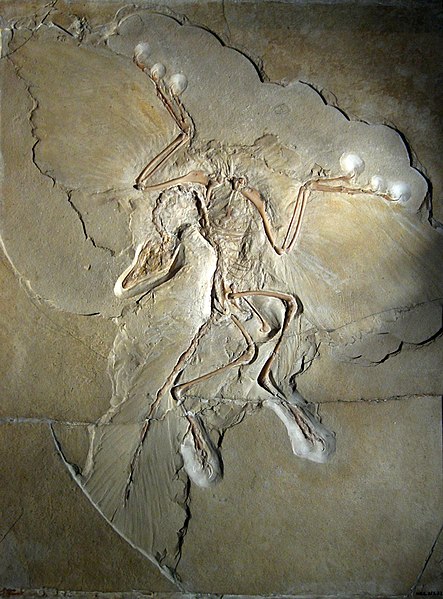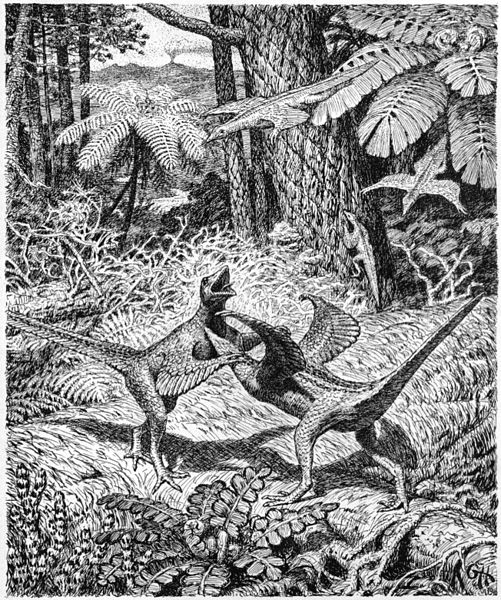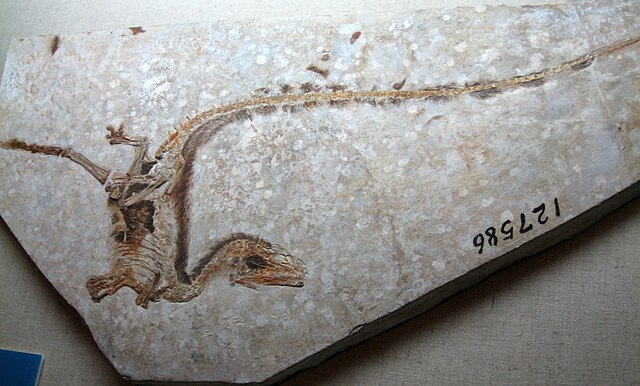The scientific question of within which larger group of animals birds evolved has traditionally been called the "origin of birds". The present scientific consensus is that birds are a group of maniraptoran theropod dinosaurs that originated during the Mesozoic Era.
The Berlin specimen of Archaeopteryx lithographica
Thomas Henry Huxley (1825–1895)
Heilmann's hypothetical illustration of a pair of fighting 'Proaves' from 1916
Fossil of Sinosauropteryx prima
The evolution of birds began in the Jurassic Period, with the earliest birds derived from a clade of theropod dinosaurs named Paraves. Birds are categorized as a biological class, Aves. For more than a century, the small theropod dinosaur Archaeopteryx lithographica from the Late Jurassic period was considered to have been the earliest bird. Modern phylogenies place birds in the dinosaur clade Theropoda. According to the current consensus, Aves and a sister group, the order Crocodilia, together are the sole living members of an unranked reptile clade, the Archosauria. Four distinct lineages of bird survived the Cretaceous–Paleogene extinction event 66 million years ago, giving rise to ostriches and relatives (Palaeognathae), waterfowl (Anseriformes), ground-living fowl (Galliformes), and "modern birds" (Neoaves).
Berlin
München
The mounted skeleton of a Velociraptor, showing the very bird-like quality of the smaller theropod dinosaurs
Reconstruction of Iberomesornis romerali, a toothed enantiornithe







